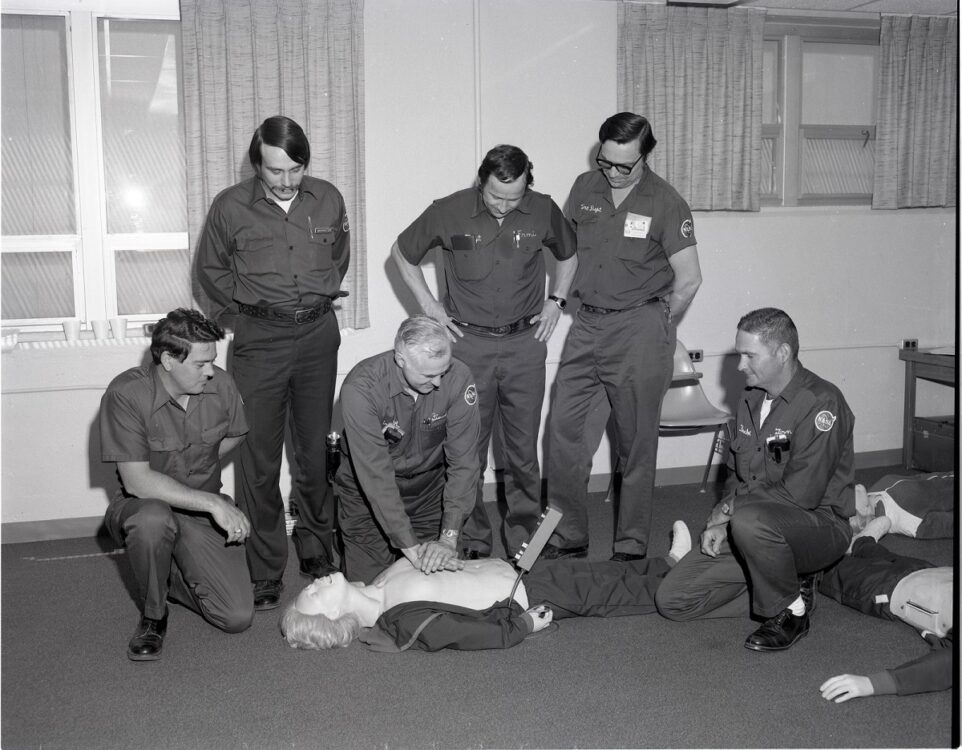CPR, also known as cardiopulmonary resuscitation, is a simple life-saving technique where one performs chest compressions and ventilations on a person experiencing cardiac arrest to keep blood pumping throughout their body. Each year in the United States, hundreds of thousands of people fall victim to cardiac arrest, a disturbance within the heart’s electrical system that causes it to stop beating. With training, however, CPR can be done by anyone and greatly helps a victim’s chance of survival. According to the American Heart Association, if CPR is done right after someone goes into cardiac arrest, they are at least twice as likely to survive. Although CPR is an effective technique that has saved countless lives, it hasn’t always looked quite like it does today.
One of the earliest known methods of resuscitation can be attributed to a Swiss doctor named Paracelsus who lived in the 1500s. He created the Bellows Method, which involved putting a fireplace bellows into the nose of a victim who had stopped breathing. Once inserted, the bellows would pump air into the victim’s respiratory system in an effort to fill the lungs with air. The process was deeply flawed because many bellows were filled with cinders and the intense gusts of air could damage the victim’s lungs.
In 1732, British physician William Tossach performed the first known instance of mouth-to-mouth resuscitation on a suffocated coal miner. Although Tossach’s method was a success, medical professionals lost confidence in the technique after chemist Carl Wilhelm Scheele discovered oxygen and after scientific knowledge about the respiratory system advanced. As the field of chemistry lunged forward, the evolution of CPR took a step back. Scientists believed that the air transferred during mouth-to-mouth would not be effective since the oxygen transferred to the victim had already passed through the lungs of the person attempting to resuscitate them.
As the field of chemistry lunged forward, the evolution of CPR took a step back.
Over a century later in 1856, British physician Marshall Hall created a new revolutionary method for artificial respiration that didn’t include any ventilations. Hall’s technique involved turning a victim from their back to their side to increase the size of the chest cavity, followed by applying pressure to the chest to release air. Although it was effective, the method was modified and improved two years later in 1858 by physician Henry Silvester. In Silvester’s method, a victim lay on the back rather than the side, and their arms were raised above their head. This expanded the chest and allowed air to flow into the lungs before their arms were crossed and pressed against their chest to expel this air. This process became widely accepted as the best way to resuscitate a victim, and versions of it were used throughout the 19th to mid-20th century.
However, while Silvester’s method soared to prominence, the medical community seemed to have largely overlooked some significant breakthroughs in the late 19th century. In 1874, German scientist Moritz Schiff was able to restore blood circulation in a dog after massaging its exposed heart in an open-chest surgery. Just a few years later in 1891, German surgeon Friedrich Maass was successfully able to resuscitate two patients using only external chest compressions. Maass proposed using external compressions in addition to respiratory ventilations for resuscitation, similar to the CPR methods used today, but his methodology was largely ignored for almost 70 years.
In 1956, Austrian anesthesiologist Peter Safar as well as American physicians James Elam and Archer Gordon were able to prove that mouth-to-mouth resuscitation did indeed work and that exhaled air was sufficient in resuscitating a victim. This led to Safar, alongside William Kouwenhoven and James Jude, combining mouth-to-mouth with external chest compressions in 1960. The method was titled “cardiopulmonary resuscitation,” or CPR for short. Countless teaching mannequins called “Resusci Annes” were manufactured for people to practice CPR, and CPR education spread rapidly in the late 20th century via the American Heart Association.
Every once in a while, it’s important to take a look back and appreciate the efforts of those who discovered and perfected these methods.
The technique used in CPR, aside from some small adjustments, stayed consistent until 2008 when the American Heart Association began to advise hands-only CPR. This switch was incited to avoid the transmission of harmful pathogens that can be spread via mouth-to-mouth. Although medical professionals and emergency responders may still use ventilations with masks and other personal protective equipment, hands-only CPR was promoted for the public as a safe, simple, and effective way to resuscitate a victim of cardiac arrest.
CPR is something that many individuals today take for granted. People tend not to question where it came from, since it’s used in intense situations that require 100 percent of one’s attention to be completely in the moment. Every once in a while, it’s important to take a look back and appreciate the efforts of those who discovered and perfected these methods. After all, their work may one day save your life.
Image Source: U.S. National Archives
